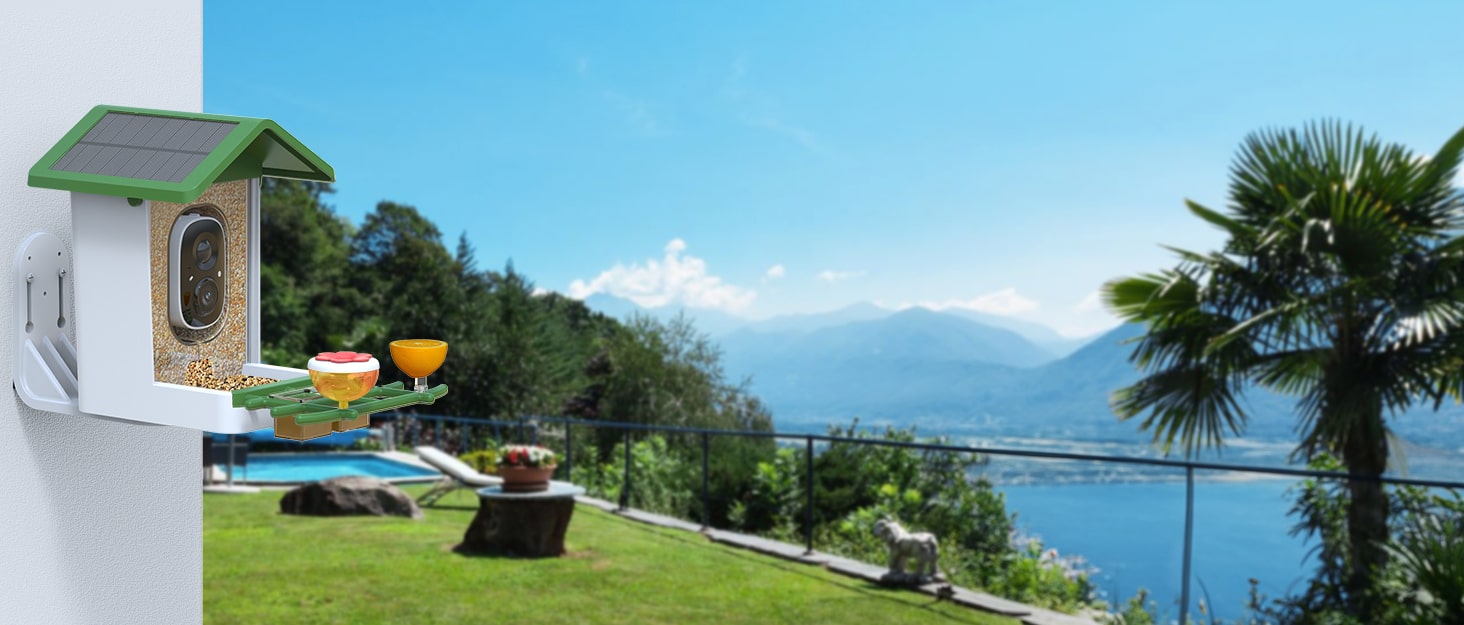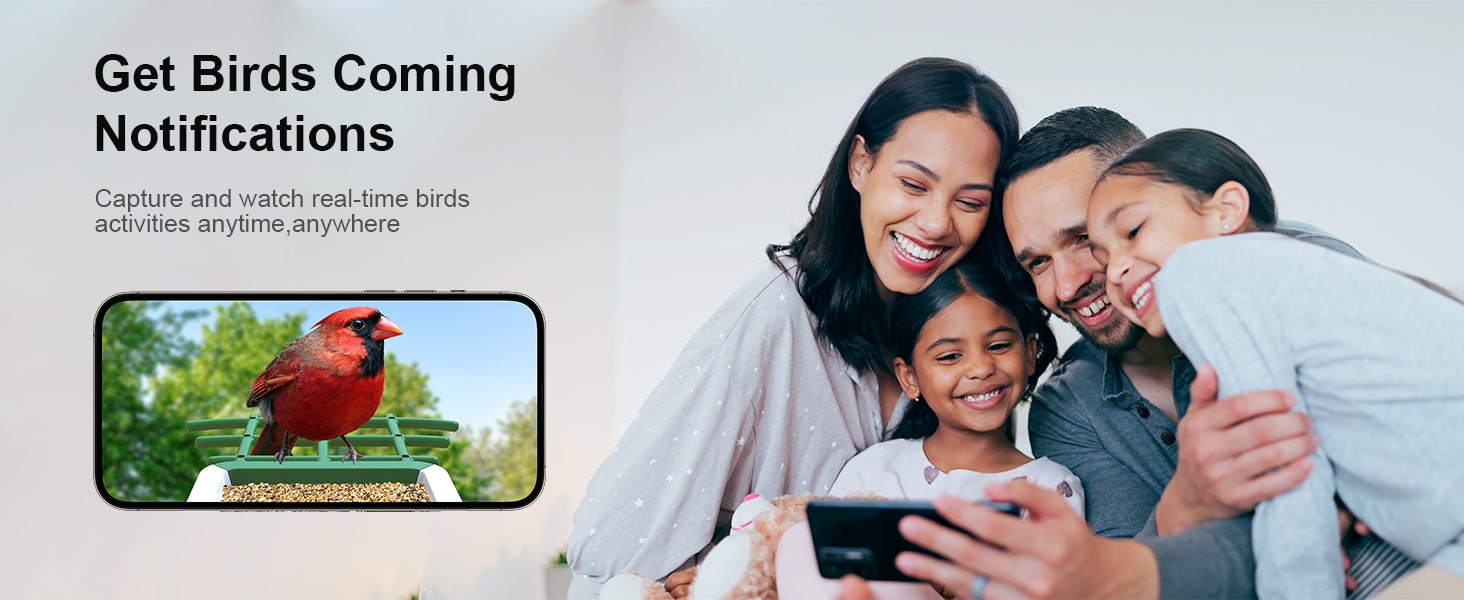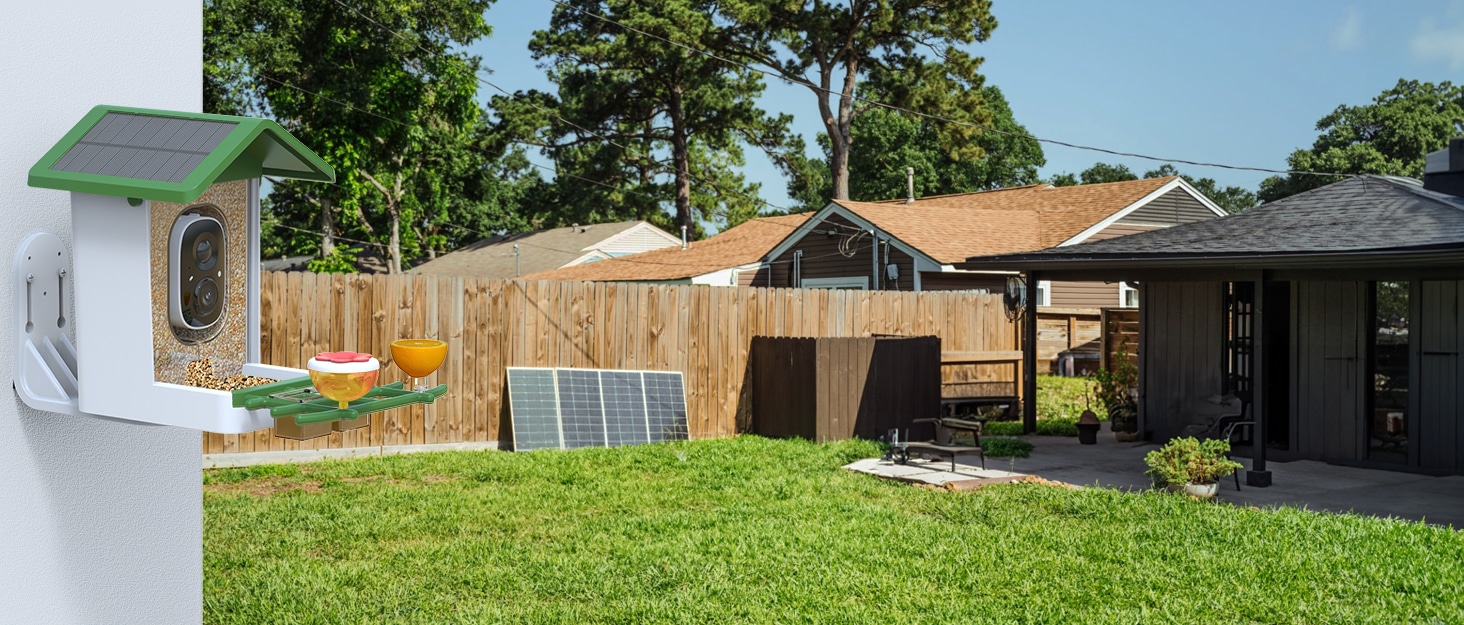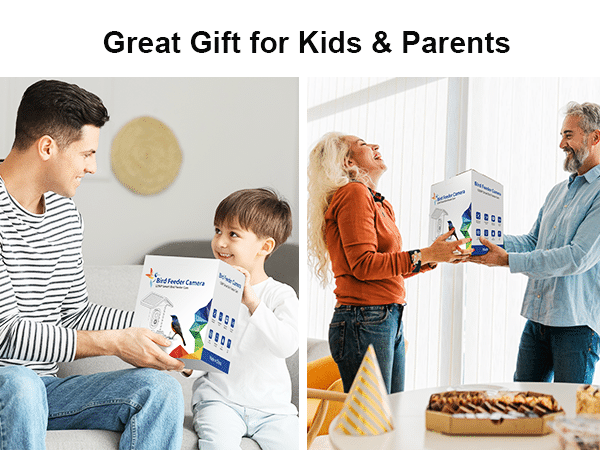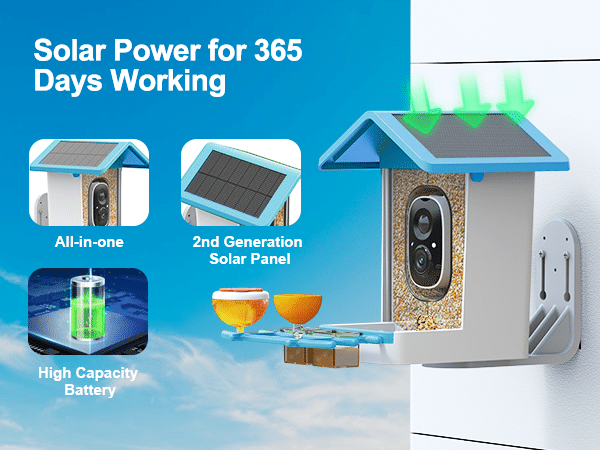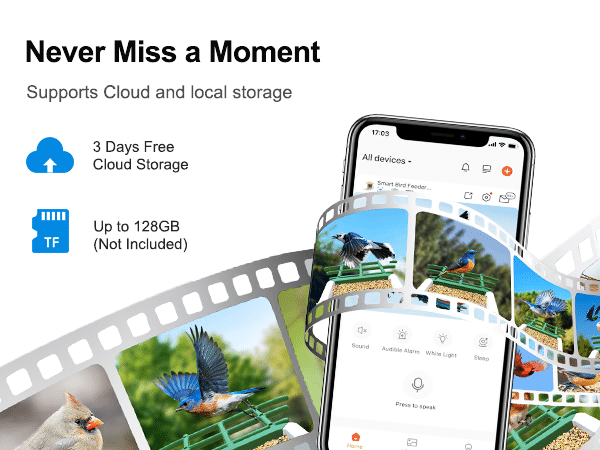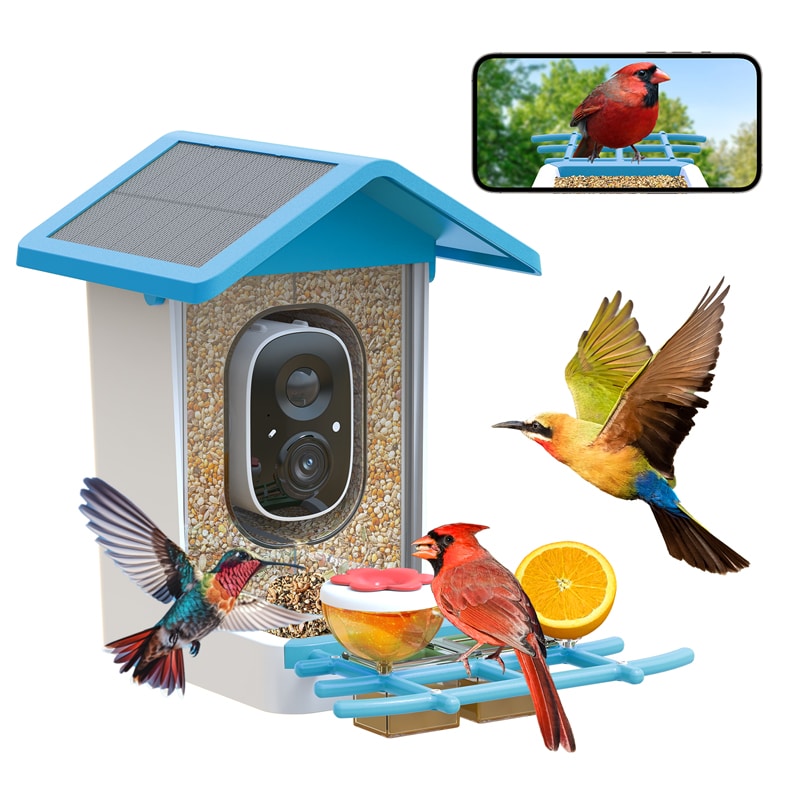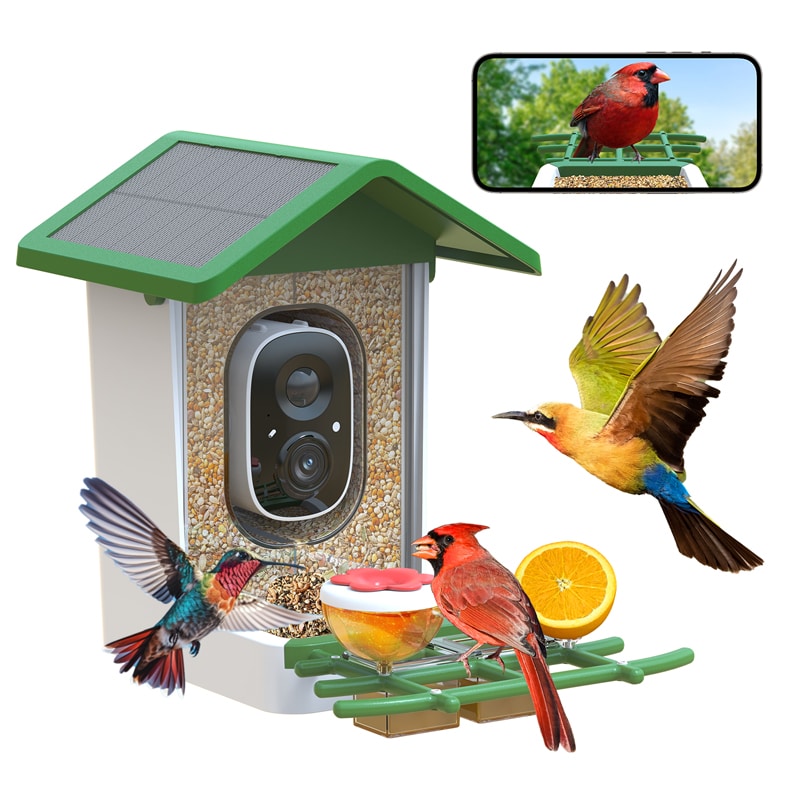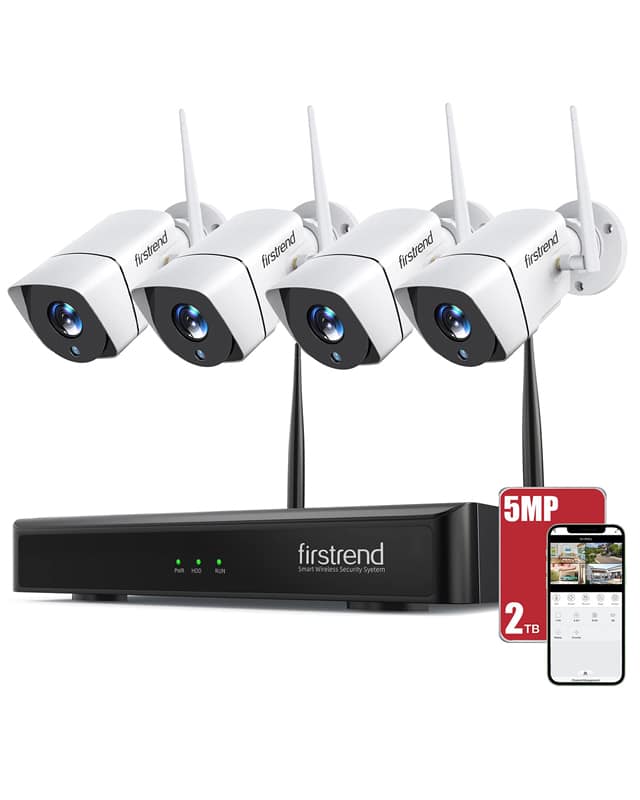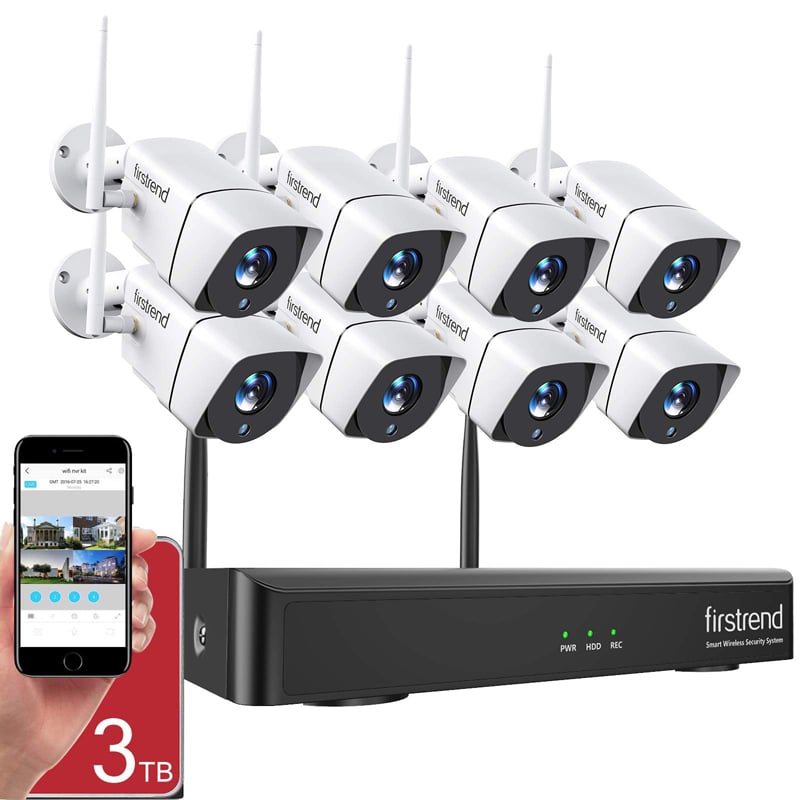Installing a birdfeeder is a great way to turn your backyard into a peaceful haven filled with chirps, colors, and feathered visitors. But after setting it up, many bird lovers are left wondering: What’s the best food to put in the feeder?
Whether you’re using a basic seed tray or a modern solar birdfeeder with camera, the type of food you offer plays a key role in the kinds of birds you’ll attract. Let’s explore the most effective feeding strategies, especially for those using a Firstrend smart birdfeeder.
1. Select Seeds Based on Local Birds
The right seed choice depends on the birds in your region. Different species have different tastes, so it helps to mix and match:
- Black-oil sunflower seeds– Widely favored by chickadees, finches, and cardinals.
- Nyjer seeds– Tiny but high in energy; a magnet for goldfinches and pine siskins.
- Safflower seeds– Loved by cardinals, ignored by squirrels.
- White millet– Perfect for ground-feeders like juncos, doves, and sparrows.
- Cracked corn– Attracts larger birds like jays, blackbirds, and pheasants.
If you’re using a smart birdfeeder camera, try offering a mix at first. Over time, you can fine-tune your blend based on which birds appear most frequently in the video feed.
2. Include Treats for Nectar and Fruit Lovers
Not all birds prefer seeds. Some species are drawn to sweet liquids, fruits, or protein-rich foods:
- Hummingbirds– Feed them homemade nectar (1 part sugar to 4 parts water), avoiding dyes.
- Orioles– Enjoy orange slices, jelly, and sugar-water nectar.
- Woodpeckers– Thrive on suet, especially during colder months when they need more fat.
If your Firstrend solar birdfeeder includes a real-time camera, you can easily spot when treats are low or when different species arrive.
3. Skip Unsafe Foods
It’s tempting to share table scraps, but not all human food is safe for birds. Avoid offering:
- Bread or crackers – Lack nutritional value.
- Salted snacks – High salt content is harmful.
- Moldy leftovers – May cause illness.
- Raw rice – Can expand and pose digestive issues.
Stick with bird-safe options and clean the feeder regularly to prevent the growth of mold or bacteria.
4. Pair Feed Types with Feeder Style
Different feeders are designed for different food types. Matching them correctly improves feeding success:
- Platform feeders– Suitable for all kinds of seeds and fruits.
- Tube feeders– Best for small seeds like sunflower hearts or nyjer.
- Hopper feeders– Good for blends and protected against rain or snow.
- Suet holders– Made for suet blocks rich in fat.
- Feeder cameras– Work best with neat, non-greasy seed options to avoid lens smudging.
A camera-equipped birdfeeder like Firstrend’s model offers helpful footage to show what birds prefer, allowing you to adjust food types accordingly.
5. Switch Up Food with the Seasons
Birds have changing needs throughout the year. Tailoring their diet can help them thrive:
- Spring & Summer– Offer protein-rich foods like dried insects or mealworms for nesting and fledgling support.
- Autumn– Begin adding high-fat foods to help migrating birds build energy reserves.
- Winter– Use calorie-dense items like peanuts, suet, and sunflower seeds to help birds survive the cold.
Firstrend’s solar birdfeeder uses sunlight during the day to power its smart features, and its built-in battery keeps the camera running even in low-light or cold conditions.
6. Provide a Water Source
Food isn’t enough—birds need water for drinking and bathing. Set up a shallow birdbath or a low-maintenance water fountain near your feeder. This not only keeps birds hydrated but also encourages repeat visits.
Combining a clean water source with your birdfeeder setup can significantly boost your yard’s attractiveness to both regulars and rare guests.
7. Clean Consistently for Bird Health
Dirty feeders can be a breeding ground for bacteria and mold, which can harm visiting birds. Wash all parts of your feeder with mild soap and warm water every couple of weeks, or more frequently in wet or humid conditions.
Birds return to feeding stations that offer both fresh food and a clean, safe environment. Keeping your station maintained signals that your yard is a trustworthy place to visit.
How Firstrend’s Smart Birdfeeder Elevates Your Birdwatching
For those who want to experience more than just feeding, the Firstrend solar-powered smart birdfeeder provides a front-row seat to backyard nature. Key features include:
- 1080P full HD camera for clear live streaming
- AI species recognition to identify common North American birds
- Dual power system (solar panel + rechargeable battery)
- Night vision to observe nocturnal visits
- Two-way audio and alarm system to gently deter squirrels
- Easy mobile app access to store photos and videos
Whether you’re a casual enthusiast or a dedicated birder, Firstrend offers a new way to connect with wildlife while keeping birds fed and happy.
Final Thoughts
Feeding wild birds is a small act that makes a big impact—not only on bird populations but on your daily connection with nature. With the right food, proper setup, and consistent care, your backyard can become a sanctuary for dozens of bird species.
And if you’re ready to take things a step further, a Firstrend smart birdfeeder with camera helps you learn more about your visitors while offering them a safe, welcoming place to eat. Nature’s beauty is only a glance away.

